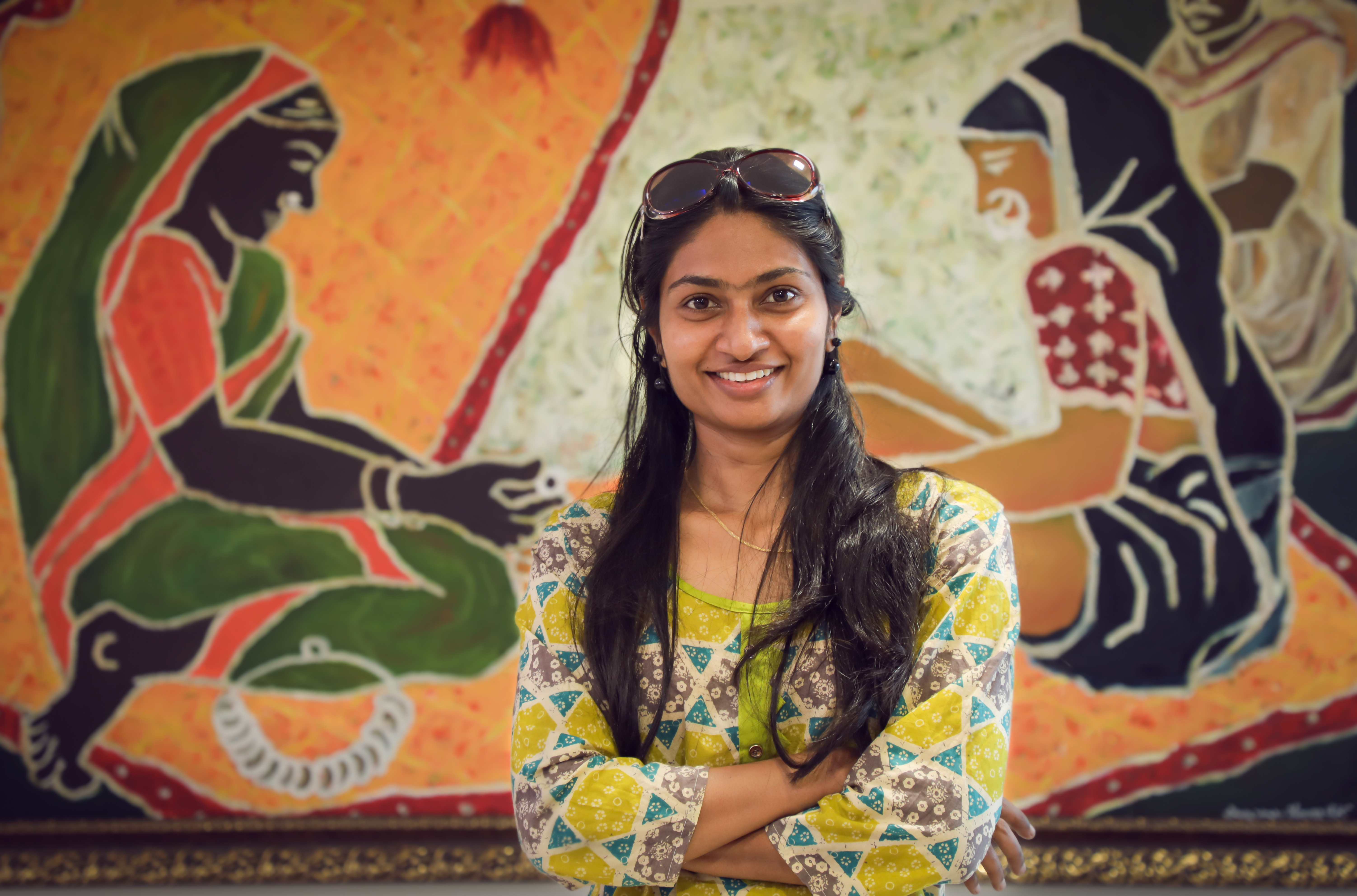Heena Shaikh is an artist hailing from the western region of the country, pursuing the art of painting abstracts on her canvas. Having met her personally and seeing her works, I noticed a discreet charm and passion in her voice, which makes her and her journey astounding to listen, and hopefully for you to read.
Tell me about your journey, how and when you began?
As a kid, I and my family used to stay in a community where we used to celebrate all the festivals. These festivals had the circulation of images of gods and goddesses in the form of calendars or posters, this was fascinating to me and I used to copy-paint these images. And this is how I started, and while I have tried other forms of art, I have always been most invested in paintings.
I studied fine arts from Bharti Vidyapeeth, Pune and filled my form for the college through the 300 rupees that I won in a Mehendi (Henna plant) competition during the Ganesh Utsav festival in our locality. My parents were never supportive of my choice of arts as a career. They believed that God or Allah is the biggest creator and artist, and we humans hold no right to create or profess art, and thus, being an artist is considered shameful and wrong by them. But, I wanted to be an artist and could do it because of the bunch of supportive teachers that I always had, and I am grateful to them. Whether it was during school or college, it was because of their faith in me, that I could develop the confidence to follow my dream of becoming an artist.
You started as a realist artist, then how did you reach to now painting abstract?
Because I started painting at a very young age, so I had sort of mastered the realist and copy painting, and then later I shifted to landscapes, understating and painting the nature around me. This helped me master the two dimensional and three dimensional methods of painting. And to learn more and gain more knowledge, I would spend most of my time with older people or with people, who could guide me, help me improve and provide more knowledge for my growth. And during my trial and error of external learnings, somebody asked me a question ‘Who are you? Your name has been given to you by your parents, but as a person and as someone who is experiencing world through a varying lens, Who Are You?’ and that stuck with me throughout. And then when I started to create my own self or my experiences it came out as abstraction and thus, began my journey as an abstract painter.
What are the challenges that you have faced and still face in the profession?
My gender and my faith have been the source of the challenges that I have faced, and this is very unfortunate. I have never been taught to discriminate, but that doesn’t mean that I haven’t been discriminated against. A lot of people have asked me wrong favours because I am a woman and that does affect my approaches and even the numbers of offers I am made. I haven’t sold any painting yet, but I have done many commercial works like murals or portraits, etc. Currently, the market itself is in an all time low, and it is tough out there.
Right now I am pursuing Masters in Fine Arts in Mumbai University, and am also working. This does get tough. The life here is too fast and is still trying to cope up with the pace. And in the past month I had to get a surgery done for my elder brother and his son who were both suffering from brain haemorrhage and nerve damage. Since my time was distributed everywhere, I couldn’t gather enough money through my work so I even had to ask from strangers for money in the form of donation.
Things are better now and I hope the conditions will improve.
Have you tried selling your art online?
No, not yet. I do not trust the marketers online and neither am I aware much. So, I haven’t tried that platform.
Tell me about any of your work.
When I first moved to Mumbai, it was the peak of monsoon and I was stranded in heavy rains. During the time, all I could notice was the kai (algae) on the tall buildings of the city. They had accumulated, over perhaps years or months at various buildings and that was astonishing to me. And that was my first painting that I made when I first got to Mumbai. The kai gave me a weird sense of the place, and that is what I put on my canvas, in abstraction.
Which Artist has been your inspiration?
While studying, I have been fascinated by the story and growth of Artist M.F Husain. I think a bit of his influence has been a part of my journey as a student. But I personally believe that one must know about the others, but never follow them. As artists or as creators we must know ourselves and move as and how we want to.
Where do you see yourself heading, in the future?
I want to find myself, have varying experiences and bring them out on the canvas. I have this innate desire to create my own identity as an artist. Post my Masters, I would like to represent my beliefs and my good and bad days on the paper and hopefully everyone will appreciate how far I have come.


